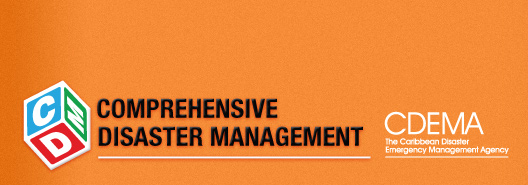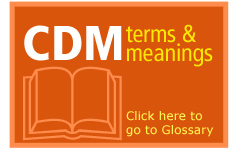
| Community Disaster Management |
|
Your community can be affected by disaster at any time. Hazards like floods, earthquakes and landslides can happen without any warning – but this doesn’t mean that you should panic. What it does mean that your community should always have a disaster plan which can respond to all your area’s needs during an emergency. You cannot assume that official help will always be available immediately after a disaster. A community should be prepared to work together so that they can find even a temporary solution to their problems. If your plan is to be successful, your entire community needs to be educated, informed and organized. It’s important that you don’t neglect anyone because of their job, literacy level, or their age. Everyone can contribute something to this plan. How can I make a plan?We have outlined four easy steps for you to follow: 1. Identify and locate hazards A hazard is the presence of something that can threaten a group of people, their activities and their environment. There are two types of hazards:
Now that you know what a hazard is, you can decide which ones your community is at risk for. Do you live near a volcano? Is your community at the bottom of a steep slope? The first thing you should do is take a good look at your surroundings. Then, consider the history of your area. What kinds of hazards have happened there in the past? Are they likely to happen again? How often do they happen? Now is also a good time to find out what kind of action was taken during the last emergency and if that can be improved. You should also know the causes of these hazards. Some hazards can be prevented, for example, the chances of flooding can be reduced if you don’t let litter build up in the gutters. Now is also a good time to become aware of organizations that can help you. Gather contacts for the Fire Department, Police, National Disaster Organization and the Hospital. 2. Find out how vulnerable you are To determine your community’s vulnerability, you must ask:
Your vulnerability also depends on your community’s capacity for dealing with disaster situations. Capacity depends on the physical, social, economic and institutional resources that you have available. Ask yourself, where the persons at risk located? What tools do you have available to help them? This can be made easier if you draw a map of your community that highlights where persons live as well as dangers like rivers, old trees, steep slopes etc. Now that you’ve done that, you can start to create an inventory of what you have. It lets you know what the community has available to respond to an emergency situation.
3. Make an Action Plan
Before the EmergencyComprehensive Disaster Management has four phases: prevention, mitigation, preparedness and response and recovery. Before an emergency, your focus is on the first two phases – prevention and mitigation, but what does that mean? Prevention refers to things you can do to avoid an event that may cause an emergency. Mitigation means what is done to reduce the effects a disaster may have. Here are some prevention and mitigation measures:
After you’ve done everything you can to avoid and reduce the effects of a disaster, you can focus on preparedness. This means you can decide how you will react to disasters that cannot be evaded. Here are some things you can do to prepare:
During the Emergency While the disaster is happening, your job is to save lives, and to reduce suffering and property damage – all while keeping yourself safe. Normally, these tasks are left to disaster organizations like the Red Cross, firemen, police or community development officers. However, a prepared community makes their job easier. This can be done by supporting them and by helping with some of the other things mentioned below:
After the EmergencyAfter the emergency has passed, your work is still far from over. At this stage, your actions are divided into two phases:
This includes:
This includes:
If you have followed the other stages of the plan, then the amount of work you have to do after the disaster should be minimal. This stage requires a lot of financial help so you need to plan ahead of time, exactly where this money will come from. 4. Test the Plan How do I test and evaluate the emergency plan?Conduct exercises that simulate conditions that occur in a real emergency. You won’t be able to fake a flood or a volcanic eruption, but you’ll be able to see how long it takes your community to evacuate and if everyone remembers what they’re supposed to do. This will tell you:
Whether or not the plan can be improved for when a real emergency strikes. |
|
Looking for:
|











